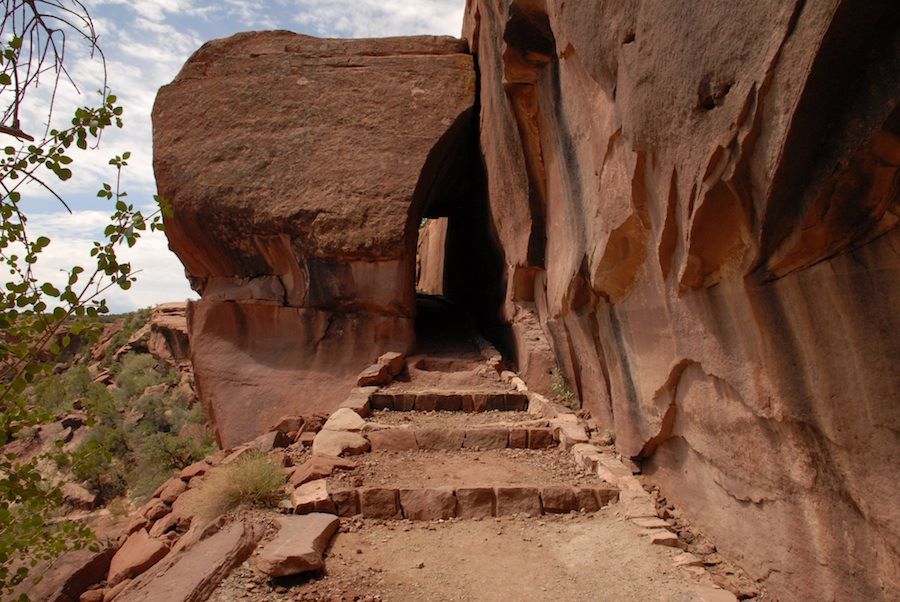
A view of Canyon de Chelly on the Arizona portion of the Navajo Nation. Photo from Navajo Parks & Recreation / Facebook
Writer Tony Brown pays a visit to some parks on the Navajo Nation and find some hidden gems:
We started out just fine, from the moment that our guide assigned us unshod Navajo ponies, right up through the 25-yard ride to the edge of Arizona’s Canyon de Chelly. Then we peered down the trail — a steep rock ledge, in places no wider than the horses themselves, that descended in a cascade of two- and three-story cliffs to the canyon floor below where, clearly, death awaited. My wife and I decided to hang on and avert our eyes. And it worked. Down on the canyon floor, after 10 of the most comically frightening minutes of our traveling lives, we asked, “What was that?” Nathan, a young Navajo horseman with a big white hat and a wispy black mustache, admitted that the descent can be startling. But the horses know the way, he said, and Navajo guides had found that warning clients didn’t improve their courage or horsemanship. So they just mount up and hope for the best. This was our exhilarating introduction to America’s Navajo Tribal Parks, a beautiful and far more relaxed take on the national park system model. There are seven Arizona-based properties that spill over into Utah and New Mexico; we visited Monument Valley and Canyon de Chelly (pronounced de Shay, and slightly affiliated with the National Park Service). The parks are in some ways legendary (Monument Valley is one of the most photographed places on Earth), but they’re also a bit of a blank spot on the nation’s travel map — undermarketed, Indian-owned properties competing with Sedona to the south, the Grand Canyon to the west, and iconic national parks in Utah to the north. The 2014 edition of the Rand McNally Road Atlas leaves the northeastern corner of Arizona largely vacant, and does not even acknowledge parks of the Navajo Nation. But those parks are an extraordinary find — rare, inviting and utterly casino-free access to Native America. All the managers, businesses, outfitters and guides are from the tribe. Monument Valley has a museum of tribal history — grand, tragic and otherwise. And, if two separate experiences with Navajo guides are any measure, the tribe is committed to making sure that a day in the Navajo Nation is as much about Native American culture and history as it is about scenic overlooks and the gift shop.Get the Story:
Tony Brown: Seeing the Navajo Nation (The Minneapolis Star Tribune 9/13)
Join the Conversation
